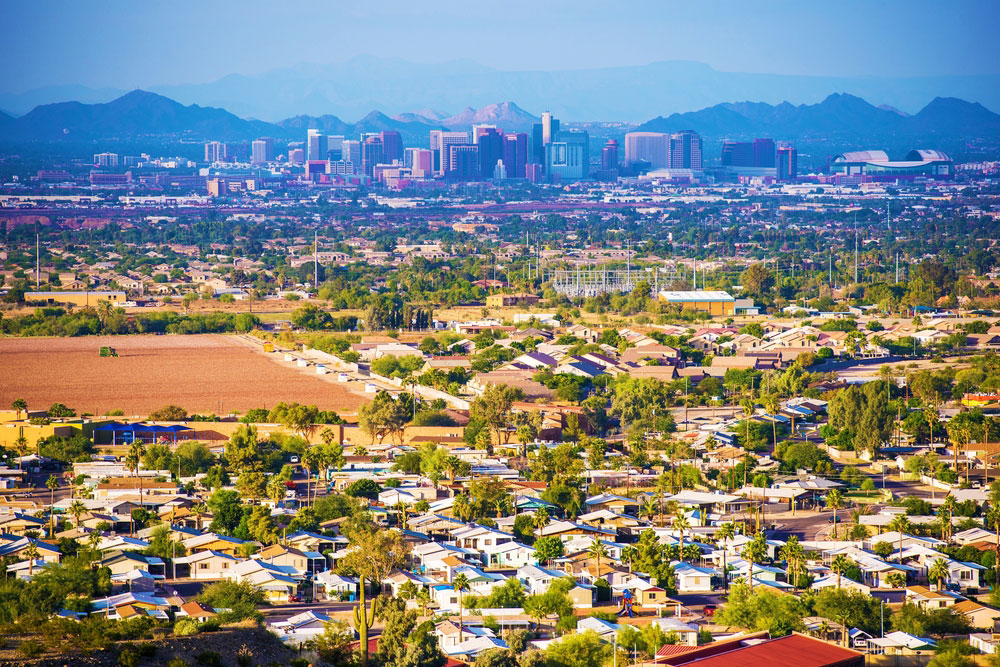Last week’s U.S. Census Bureau figures show Arizona’s official population was a larger percentage less than previous estimates than any other state.
Some are using it as ammunition to pepper Gov. Doug Ducey, a likely candidate for office in future election cycles. Others are floating the idea that there’s a blue-state conspiracy to lessen the political power of Republican strongholds. Demographers admit the real problem appears as confounding as it is old.
A total of 7,151,502 people called Arizona home as of April 1, 2020, according to the U.S. Census Bureau count. An earlier estimate by census counters had the population as 7,421,401, a 3.6% difference that wasn’t in the state’s favor. The difference meant Arizona did not gain a seat in Congress for the first time since 1950.
The difference of nearly 270,000 people, roughly the population of Chandler or Scottsdale, means a significant amount of lost federal dollars for the state. Arizona officials estimated each resident that went uncounted would cost $887. A 1% undercount, officials estimated, would cost the state $62 million per year for a decade.
It’s important to remember the census’ annual population figures are only estimates, something less accurate than the official decennial headcount. The agency uses data from births, deaths and migration in comparison to the baseline decennial count.
The question remains: why does Arizona have so many fewer people than annual estimates projected?
“In my view, it looks like the July 1, 2020, population estimate for Arizona from the U.S. Census Bureau was on the high side,” said Jim Chang, Arizona’s state demographer. “We always assumed we would be off, it’s just a question of how much.”
For demographer Lyman Stone, the answer appears to be a concoction of several elements unique to states such as Arizona and Florida, which also recorded what seemed to be an undercount.
“The error in estimates for Arizona in both years is an interesting phenomenon, and I don’t know exactly why it happens,” Stone said. “However, it’s likely that the combination of a large undocumented population, high cross-border flows, high domestic migration, large numbers of part-year residents, and large increase in housing construction all made estimation very challenging for Arizona.”
Stone said these factors also would make it hard to get a reliable count in the census.
“Arizona is just hard to count due to the large amount of migratory churn and expansion of the built-up area,” Stone said.
All other counts being constant, Arizona would have needed nearly 80,000 more residents to have gained a member of Congress and an electoral vote.
Like Florida Gov. Ron DeSantis, Ducey didn’t spend the outsized sums of money that states such as California, New York, Minnesota and others did. This, his opponents said, is worthy of criticism.
Arizona had a 64.1% response rate, below the national average of 67%. In general, states that poured more taxpayer funds into counting efforts saw a slightly higher response rate, but there’s no proving the campaigns worked.
After a closer look at historical data, Stone said Arizona improved its census response compared with the 2010 census.
“Arizona’s response rate to the census rose between 2010 and 2020, and it rose by more than the national average,” he said. “It remains below the national average and below the levels we see in Nevada, California, and Utah, but considerably above response rates in New Mexico.”
Arizona made significant improvements in participation, Stone said, but had a similar difference between estimates and official count in 2010.
There is always a portion of addresses census officials aren’t able to resolve. Stone said Arizona’s uncounted addresses fell significantly since 2010 and more than the decrease nationally.
“Likewise, administrative record usage was at normal levels, as was occupant-response to non-response follow-up, which all suggests that Arizona did not have major problems in administration,” he said.
Notably, the 2020 census was the first to utilize online forms.
Many blame former President Donald Trump for ginning up anxiety over a citizenship question on the census, even though the effort failed, resulting in a lower response rate in Arizona’s Latin American population. Lyman discounted this, saying New Mexico, California and Utah also have significant Hispanic populations but outperformed the states’ respective estimates.
“I do not think low response rates among Hispanics can really account for the trends we observe,” he said.
Both Chang and Stone said some of the questions would be answered when the census releases more detailed data either later this year or 2022.
This article was originally posted on Who’s to blame for Arizona’s nation-leading census undercount?






Be First to Comment